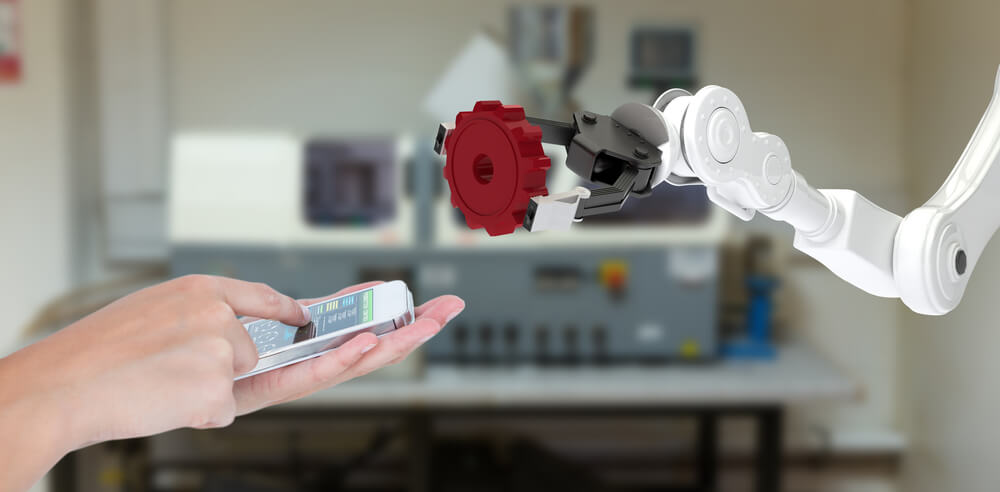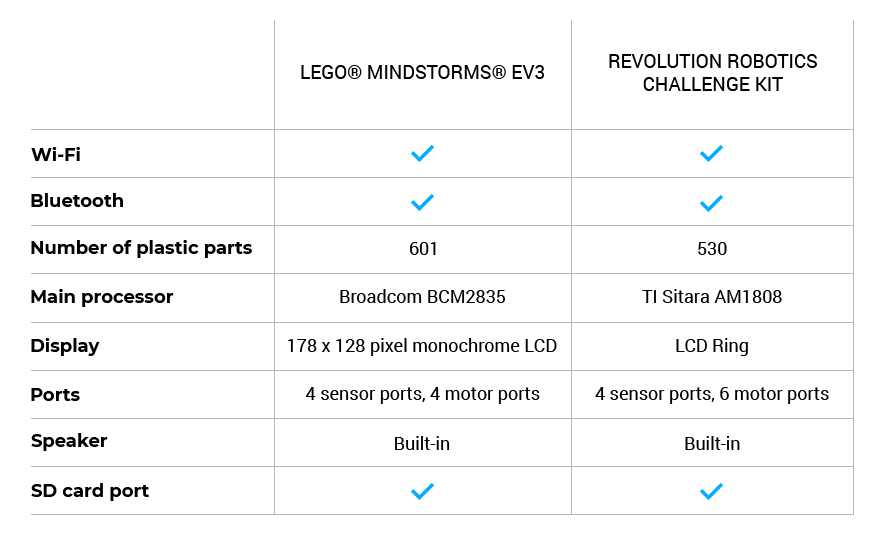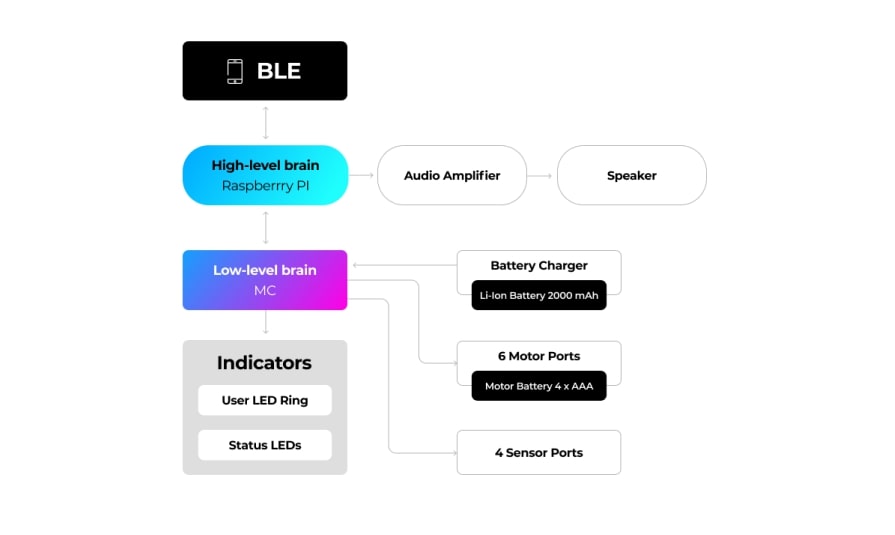Check out our latest blog article: From component to enterprise – modular robotics done right.

An Electronic Kit for Robot Assembly
Enables robot’s sensor and motor control through a smartphone
The client is a US tech company that makes kid robotics programs. They had an idea for a new product for schools that teach programming to kids. The solution would provide the same functionality as competitors but at a lower price.
Case Highlights
- Designed to assemble robots that can be programmed and controlled using a smartphone
- Supports audio playback
- Employs RGB LEDs
- Is driven by scalable firmware for
complex sensor and motor operation - Employs open-source hardware, and
- CAD models
Project Information
T&M (time and materials)
Agile
Schematic Designers
C Developer
PCB Designers
Python Developer
Problem
Revolution Robotics wanted to create an electronic kit for children. It would allow users to assemble, program, and control robots with a smartphone. The kit would include over 530 plastic parts, open-source hardware design, firmware, and a library of parts that can be printed on a 3D printer.
The client turned to Softeq to develop the solution’s hardware and software parts.
Solution

Assembly and Operation
The solution controls the robot’s sensors and motors through commands received from a smartphone.
To assemble the robot and prepare it for manipulation, the user first needs:
- To connect the robot’s brain to the phone via BLE, and then attach the sensors, motors and plastic parts to the robot’s body.
- To specify in the mobile app which component is connected to which port, and program the robot’s logic. The robot will either move by executing a preprogrammed algorithm or based on commands sent from a smartphone.
Interfaces
We implemented a set of interfaces that allow users to connect light and proximity sensors, an accelerometer, and a bump switch. The solution also supports DC and servo motors with attachable wheels and manipulators, which let the robot rotate and move around. The custom-developed firmware helps connect complex sensors and motors and has been designed to support scalability — programming additional features on demand.
Indicators
To display device status, we implemented two types of LED indicators. The ‘Status’ LED shows the battery status and the ‘Ring’ LED serves as a user interface, which is user-configurable and displays the program execution (e.g. the robot is connected to the smartphone).
Power, Audio Playback
To simplify the design, we separated the motor and brain power systems. The solution now contains two batteries – one for powering the robot brain (rechargeable via USB) and one for powering the motors (replaceable). To enable audio playback, we connected the audio amplifier and speaker to the Raspberry Pi board.
Communication
Softeq developed a protocol for communication between the mobile phone and the Raspberry Pi board that allows users to program and control the robot with a smartphone. The client’s team subsequently used the protocol to develop their mobile application.
Budget
As the customer's goal was to make the product affordable, there were tight budget constraints. Therefore, we had to ensure that the cost of the product, including the schematics with all components on the board, enclosure parts, and services at the assembly plant, did not exceed the allocated budget. After several iterations, we managed to optimize the cost of the electronic components and plastic parts without cutting the robot's functionality.
Similar Project Idea?
Explore our electronic circuit design capabilities to find out if we’re the right partner for your needs Learn more
"We went from concept to fully-delivered product in under one year, which for a hardware project in this scale is pretty impressive. I think we were happiest with the fact that we could deliver on time and within a budget that we had. [...] And being able to do that with Softeq’s help was really important to us. "
Watch video reviewResult
Multi-unit Low-cost Robotics Kit
The resulting solution - Revolution Robotics Challenge Kit – includes over 530 plastic parts, open source hardware design, firmware, and a library of parts that can be printed on a 3D printer. When the project was completed, it met the customer’s allocated budget.

Revolution Robotics Challenge Kit is similar in functionality to LEGO® MINDSTORMS® EV3, but has a lower price.






